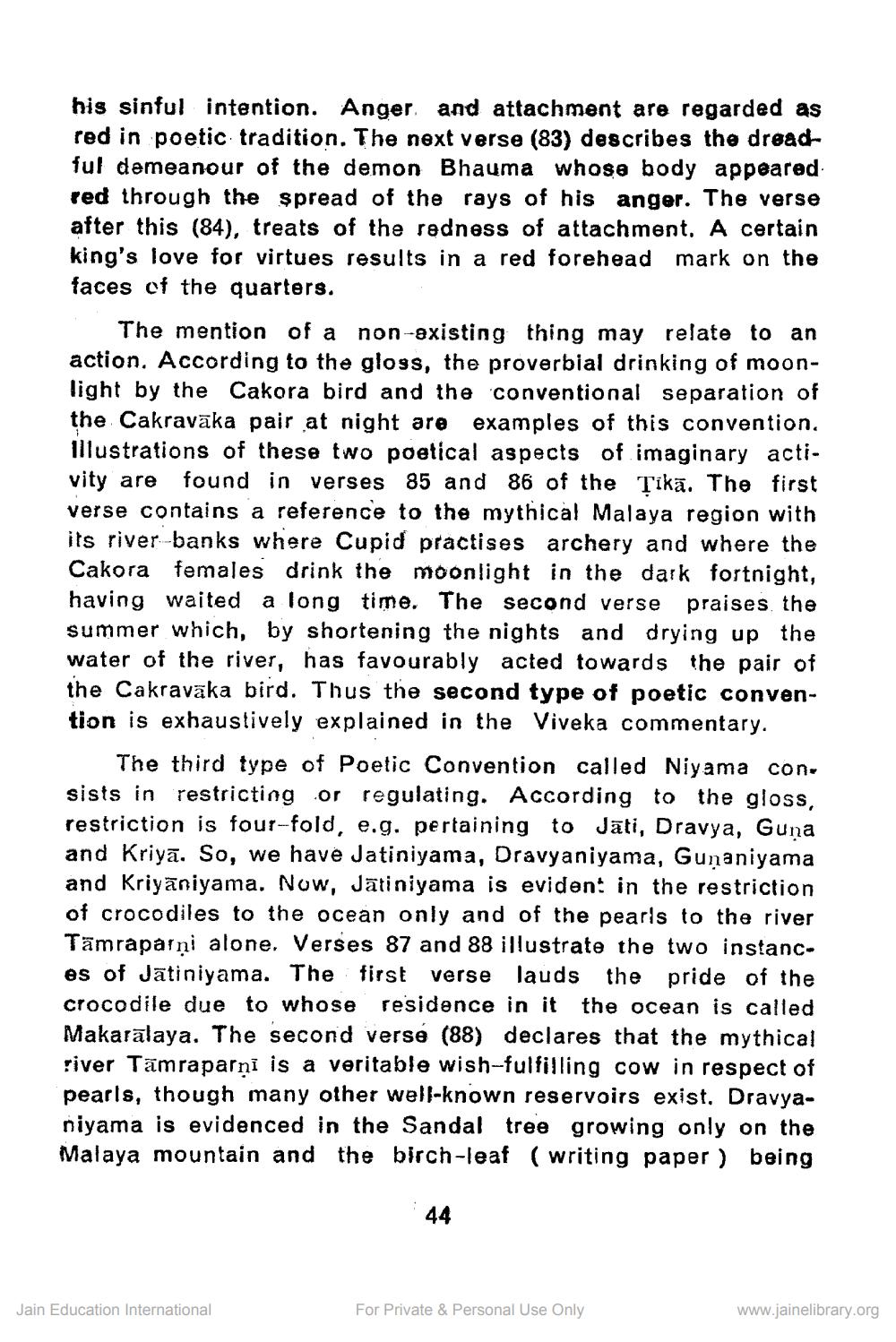________________
his sinful intention. Anger and attachment are regarded as red in poetic tradition. The next verse (83) describes the dread ful demeanour of the demon Bhauma whose body appeared red through the spread of the rays of his anger. The verse after this (84), treats of the redness of attachment. A certain king's love for virtues results in a red forehead mark on the faces of the quarters.
The mention of a non-existing thing may relate to an action. According to the gloss, the proverbial drinking of moonlight by the Cakora bird and the conventional separation of the Cakravāka pair at night are examples of this convention. Illustrations of these two poetical aspects of imaginary activity are found in verses 85 and 86 of the Tikā. The first verse contains a reference to the mythical Malaya region with its river-banks where Cupid practises archery and where the Cakora females drink the moonlight in the dark fortnight, having waited a long time. The second verse praises the summer which, by shortening the nights and drying up the water of the river, has favourably acted towards the pair of the Cakravaka bird. Thus the second type of poetic convention is exhaustively explained in the Viveka commentary.
The third type of Poetic Convention called Niyama con sists in restricting or regulating. According to the gloss, restriction is four-fold, e.g. pertaining to Jāti, Dravya, Guna and Kriyā. So, we have Jatiniyama, Dravyaniyama, Gunaniyama and Kriyāniyama. Now, Jātiniyama is eviden: in the restriction of crocodiles to the ocean only and of the pearls to the river Tämraparni alone. Verses 87 and 88 illustrate the two instance es of Jātiniyama. The first verse lauds the pride of the crocodile due to whose residence in it the ocean is called Makarālaya. The second verse (88) declares that the mythical river Tämraparni is a veritable wish-fulfilling cow in respect of pearls, though many other well-known reservoirs exist. Dravyaniyama is evidenced in the Sandal tree growing only on the Malaya mountain and the birch-leaf ( writing paper ) being
44
Jain Education International
For Private & Personal Use Only
www.jainelibrary.org




